If you put the brakes on a big avionics upgrade because of the eye-watering price and lead time, you likely considered used equipment. In normal times that might not be a bad plan, but the market isn’t exactly what I consider normal.
Have prices of pre-owned electronics skyrocketed as they have for aircraft? You bet they have, and so has demand. Part of that is the result of a choked supply chain of components and shop labor. That has changed the landscape for buying late-model and even aging avionics, where waiting lists are growing and prices are more inflated than they should be.
To find out what this means for consumers looking to shave dollars off the price of a major avionics installation, I talked with busy avionics shops and used equipment resellers. The news isn’t good and there aren’t many signs that things will get better any time soon.
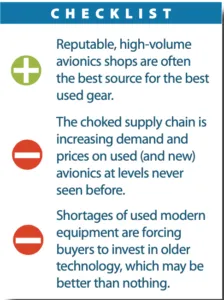
Supply Chain – Again
Unanimously, shops I talked with agreed that supply chain issues are putting a serious crimp in their operation. Whether it’s install supplies or major equipment, the choked supply chain is causing longer lead times to get projects started and longer downtime on shop floors (and in tiedown spots outside of packed hangars as airplanes sit and wait in various stages of disassembly), and this is having an impact on the used avionics market.
Think about it: The used equipment market won’t see a healthy supply of used gear if new retrofit projects move at a snail’s pace because of parts shortages. If an owner makes the decision to yank out his suite of dual Garmin GNS 430W systems, as one example, it could be nine months or longer before those used boxes are available for resale. This is creating long waiting lists—and premium prices—for popular used avionics.
To get a firsthand look into the complicated world of pre-owned avionics, I talked with Chase Larabee at Avionics Source in Seattle, Washington. His company works closely with avionics shops and end users by sourcing and reselling the best gear the used market has to offer. It’s not an easy business of late.
“In the decade that I have been in the general aviation avionics industry we are walking in the most volatile market environment I have ever seen,” Larabee told me. He would know, as he’s seen a lot from both sides of the fence, once a regional sales manager at Avidyne before starting Avionics Source in 2015. In that time, his company has moved lots of Garmin, Avidyne, Aspen and other popular equipment. In fact, he says the company is the number one Avidyne retailer in the world. Avionics Source partners with shops that have testing, repair and certification capabilities to go through the equipment before reselling it.
Larabee pointed out that just about every avionics manufacturer is facing similar supply chain constraints, rate limitations, capacity issues, equipment shortages and price increases. Ultimately, all of that falls on the consumer, who is potentially paying more and waiting longer for the same product that was not long ago in stock and readily available at a lower price.
“The Garmins, the Avidynes and the Aspens of the world have never dealt with the headwinds that they are facing today,” Larabee said.
He also pointed out that the industry mostly escaped pandemic implications for nearly a year and a half, while the airline industry, as one example, didn’t hold up nearly as well. Because the GA market, in general, shops so far in advance for critical components, a lot of the OEM buying can be done in 18- to 24-month increments. That’s why the year 2020 and much of 2021 were mostly challenge-free for the avionics market, except for shop workload issues that continue to worsen.
Remember that a lot of shops were (and still are) operating with skeleton crews as illness swept through their facilities. But other than labor issues, the used (and new) avionics market skated by with little disruption. Until now.
Like The Car Market
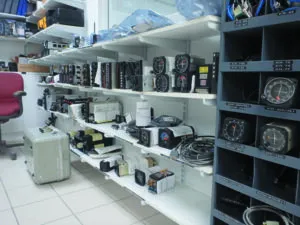
What this means is that the stock levels at both the OEM and avionics shop level simply can’t be replenished to meet demand.
“We’ve seen some scary headlines from popular manufacturers that we all know and love,” Larabee said. Parts shortages don’t help certification efforts, either.
Dynon, as one example, is knee-deep in expanding the STC for its integrated autopilot for the SkyView HDX Certified integrated avionics suite. This might send potential buyers to the used autopilot market as an alternative—something I usually advise against since autopilots are closely fitted to specific airframes. Chances are the used S-TEC system you find at a salvage dealer won’t work in your aircraft without modification and sourcing the correct install kit—and buying the rights to use the STC.
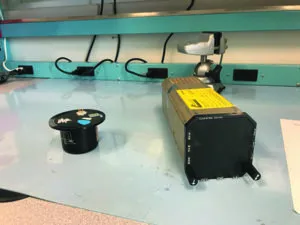
The reality to all of this is that buyers are stuck in the position of having to pay more today (and the foreseeable future) or deal with taking delivery at an unknown time. But it’s also driving buyers to the used market, creating demand that we haven’t seen before.
Given the market uncertainties, more than one used avionics salesperson told me that buyers with an opportunity to snag the gear they want, even if it’s at a higher price, should do it to simply to get in and out of the market. I think that same advice applies to those buying new gear, especially if your trusted shop can get you on the schedule, get the work done and is willing to take your removed gear in trade, as the majority of shops might consider.
It’s easy to draw parallels to what’s going in the used and new vehicle market. My Acura dealer (in business for nearly 30 years) told me it’s delivering new vehicles with only one electronic key fob because of the chip shortages, it is selling all models at MSRP-plus and it has never seen this kind of inventory shortage of new and used vehicles.
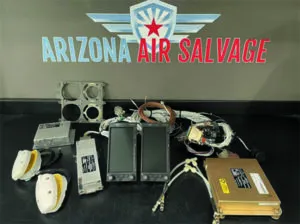
Larabee told me that while it’s easy to compare the issues in the avionics market with what we’re seeing in the vehicle market, there are some differences.
“The problem is that the avionics equipment being delivered to a shop in Nebraska is being used to fulfill an order from a customer’s deposit that was paid many months ago,” he accurately pointed out. So when avionics manufacturers are finally able to spool up production, the prices are likely going to skyrocket. It’s already happening with popular current-production equipment. Garmin GTN 750 navigators, as one example, are selling for roughly $1000 more today than they were a year ago with a half-dozen or more customers in line to buy the next one.
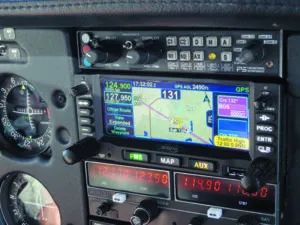
Our search of the pre-owned Garmin GTN navigator market didn’t exactly light up the screen. A Trade-A-Plane inquiry came up empty for the GTN 750 and smaller GTN 650 and there were none on Barnstormers.com. Gulf Coast Avionics in Florida was advertising one for $14,500, but was out of stock. The list price for a new GTN 750 TXi starts at $16,245. A search of eBay turned up a used GTN 650 from the respected salvage dealer Wentworth Aircraft. It sold for $9500. List price for a new one starts at $10,795.
Avidyne navigators, including the IFD540 and IFD440 models, aren’t exactly easy to come by, either. They generally don’t get removed because they’re made to replace aging Garmin GNS 530W and 430W units—a market that remains impressively strong. Plan on paying every bit of $9000 for a pristine GNS 530W system, and nearly $7000 for a GNS 430W. They’re still supported by Garmin, but carry hefty flat-rate repair prices. But unlike newer GTN units, there are GNS models out there.
When I talked with TJ Spitzmiller at Sarasota Avionics in Florida in early winter, his shop had a handful of systems in stock that were removed from aircraft during major avionics retrofits.
“Garmin GNS 430Ws sell pretty well, and I’m pretty surprised that we have nine units of various versions in stock right now,” he told me. That’s a lot, and maybe not for long. Lots of shops are sourcing the systems on their own in hopes of saving sales when they can’t offer lower-end buyers new gear. When it comes down to it and as dated as the technology is at this point, a used GNS 430W is still a step up in capability for an aging airplane that hasn’t seen an avionics upgrade in the past 25 or so years—and there are still a lot of these aircraft out there.
Worth mentioning is the other thing that’s driving demand is the brisk used aircraft market. With so many aircraft changing hands, there is more call for upgrades, and banks are lending big. That leaves room in the budget for major upgrades.
The Only Way Out
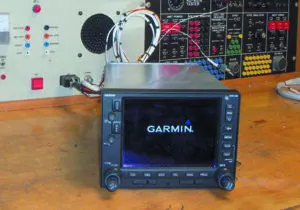
These days, the level of integration between major systems in a retrofit avionics suite is a double-edged sword. No doubt, the capabilities and automation of a fully integrated Garmin suite, as an example, have never been more advanced. But consider the following scenario.
You put the aircraft down for a Garmin G500 TXi flight display, a GFC 500 autopilot and a GTN 750-TXi navigator. The shop is getting to the final stages of the project and is soon ready for testing. But only one problem—it still doesn’t have the GTN 750. It’s at a work stoppage. Of course, good shops never would have brought the aircraft in if it didn’t have all of the equipment for the job. Or would they? You should ask.
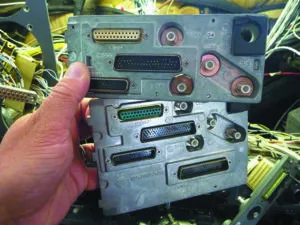
Typically it works like this, and I’m not implying it ultimately goes down like this at every shop, but I know it happens at plenty of them: You agree with the shop’s written proposal (including payment terms) and you pay a deposit (often half of the project costs) to secure a spot on the shop’s schedule, and presumably to order the equipment. It’s not unheard of to wait nine months or longer to get the retrofit started. With cash flow running tight at many shops (it’s been that way forever) your deposit money could be paying for the equipment sourced for a job that was completed long before your aircraft hits the shop floor.
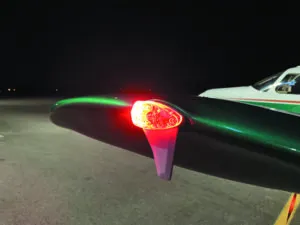
In other words, the shop more than likely isn’t ordering your equipment nine months ahead of time. Instead, it may order the stuff when the aircraft arrives. And in a choked supply chain, that doesn’t work and it’s surely a way to sour an otherwise good relationship. Here’s why.
With the shop having everything but the GTN 750 (assuming the 750 is the system on backorder; it could be any major system, or any brand for that matter), the aircraft is stuck. Send it out to the tiedown while the shop waits for the equipment to arrive, and it moves on to the next job. Meanwhile, you’re getting nervous about that trip you had scheduled a year ago, planning to fly it with the new avionics. Now what do you do? What buyers are doing is sourcing a used component to fill the hole in the panel, perhaps paying as much or more for what a new unit costs simply because it’s the only way out.
Social Media
If there is one thing that’s in a buyer’s favor it’s the internet—and social media in particular. The same goes for type clubs with active forums. These make it easier than ever to hunt used avionics. There has been an explosion of private Facebook groups dedicated solely to buying and selling avionics.
Aircraft Avionics Exchange is one private group with over 25,000 members. Avionics Marketplace has almost 3000, as does Avionics For Sale. There’s even a private group dedicated to buying, installing and owning Garmin gear called Garmin Avionics Enthusiasts. It has roughly 8000 members.
Wrap It Up
As we’ve preached ad nauseam over the years in these pages, make sure the used equipment you commit to has everything your shop needs to put it in, including the right FAA paperwork proving that it’s airworthy. Before buying anything, tell the shop what you are doing and if possible, have the shop source the gear. Additionally, consider flat-rate repair pricing at the factory on any piece of used avionics. Ones that have already been back to the OEM for repair or refurb will surely be premium priced, but could also have a warranty in place.
We’ll look at flat-rate repair pricing for avionics and instruments in an upcoming issue of Aviation Consumer.
This article originally appeared in the March 2022 issue of Aviation Consumer magazine.
For more great content like this, subscribe to Aviation Consumer!




































There are stories out there that say some manufacturers are not servicing some used avionics due to them being in an accident or some other issue. Best to clear the SN with any manufacturer before closing the deal. You could be stuck with an expensive boat anchor.